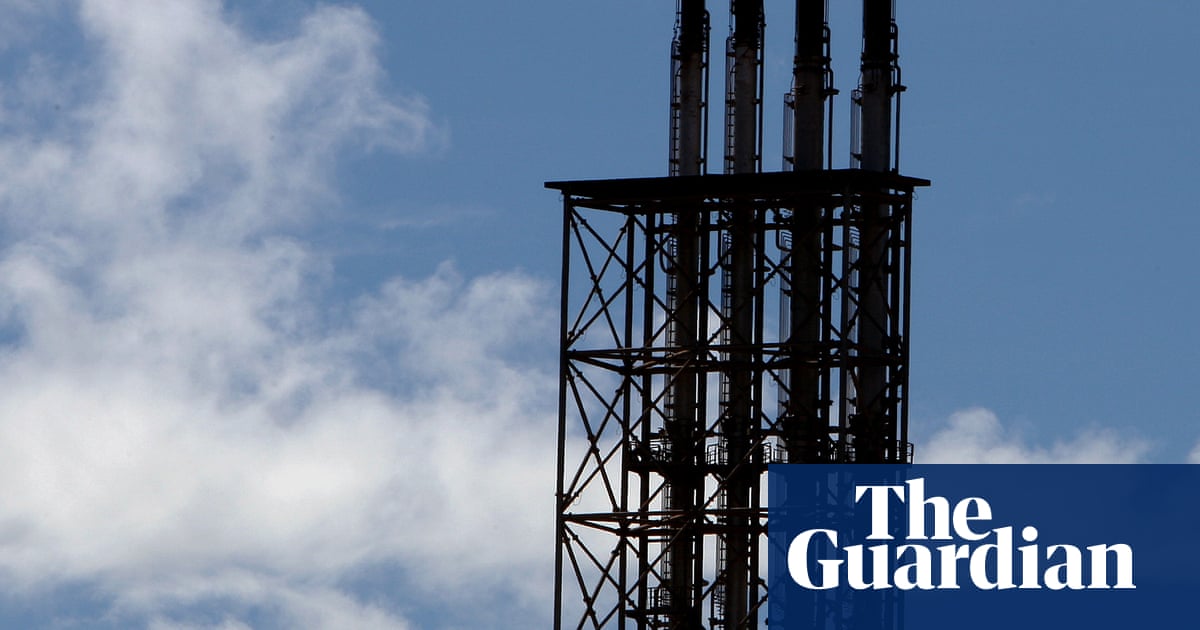We don’t know all the evidence that the new environment minister, Murray Watt, had before himwhen he decided to approvea 40-year life extension to one of Australia’s biggest fossil fuel developments so that it could run until 2070.
But we do know this. The decision largely turned on whether the North West Shelf liquefied natural gas (LNG) development on the Pilbara’s Burrup Hub can coexist for decades into the future with an incredible collection of ancient Murujuga rock art, some of it nearly 50,000 years old and unlike anything else on the planet.
And there is enough evidence in the public domain for people to have, at best, serious doubts.
A summary of a rock art monitoring report compiled last year – but only released by the unwaveringly pro-gas Western Australian Labor government last Friday afternoon – acknowledged that emissions of nitrogen oxide and sulphur dioxide had damaged the rock types on which the art is etched.
Get Guardian Australia environment editor Adam Morton’s Clear Air column as an email
But it said this was OK. It concluded that this problem peaked in the 1970s – a time when there was far less industrial activity in the region than today. There was no LNG export industry, and therefore not one of the world’s largest LNG processing facilities. But there was a relatively small gas power plant.
The WA government summary – backed by the Murujuga Aboriginal Corporation – suggested this was likely the major cause of the problem, and that pollutant levels have declined over the past decade.
The scientific report behind the summary was 800 pages long and it took some time for people to digest it. Once they had, concerns were raised. Benjamin Smith, an archaeology professor at the University of Western Australia,said data in the reportsuggested local acidic pollution was actually four times higher now than when Gough Whitlam and Malcolm Fraser were running the country. He claimed scientists who worked on the report were being gagged so they couldn’t raise their concerns about how their data was being interpreted.
Not long after,the ABC released details of an email complaint from Adrian Baddeley, the chief statistician who worked on the rock art monitoring, accusing WA government officials of removing some information from a graph in the summary, and adding a claim that current pollution levels are “lower than the interim guideline levels”.
Baddeley said the five monitoring sites closest to industrial development were experiencing pollution levels above a guideline level, and claimed there was “unacceptable interference in the scientific integrity of the project”.
The WA premier, Roger Cook, told the ABC’s Radio National that some scientists were engaging in a “political frolic”. “We have to strip away the background noise and rely upon the reports to make good decisions on behalf of the people of Western Australia,” he said.
This came to light on Wednesday, shortly before Watt announced his decision.
Sign up toClear Air Australia
Adam Morton brings you incisive analysis about the politics and impact of the climate crisis
after newsletter promotion
Watt could have taken time to absorb this. There was nothing forcing him to rush into an announcement. Even Cook – an assertive backer of Woodside’s plans – had said just hours earlier that the minister should move quickly but not make a “hurried decision”. Watt chose to move just as a significant cloud enshrouded a key piece of evidence.
People will draw their own conclusions about whether it is a coincidence that the announcement came at a busy news time, when focus was on the reunited Coalition and shortly before the rugby league State of Origin series consumed the attention of millions of people in Queensland and New South Wales. But let’s put it this way: if you wanted to avoid accusations of politically motivated cynicism, you wouldn’t have dropped it on Wednesday afternoon.
Two things seem clear. The first is that the precautionary principle – long meant to be a guiding light in environmental decisions – is hard to see here. Whatever the weight of evidence about what amount of pollution is sustainable, and for what period, we know emissions have degraded the rock. We are gambling with a place of extraordinary cultural heritage for the sake of short-term interests.
A draft decision by Unesco, revealed on Wednesday, that industrial activity makes a world-heritage listing for the Murujuga cultural landscape unlikely only underlines that point.
The second is that it will almost certainly face legal challenges. Raelene Cooper, a Mardathoonera woman and former chair of the Murujuga Aboriginal Corporation, flagged this in a blunt media statement that told the government she would see them in court.
These issues would be enough to raise concerns about the decision – but there is also the not insignificant issue of the huge greenhouse gas emissions that will result.
For several years, the North West Shelf was the biggest polluting site within Australia, and it still sits in the leading pack of emitters. Much, much more pollution is released once the LNG is shipped and burned overseas. It is often tagged as a “carbon bomb”. Some see this as an easy pejorative term used by activists. Maybe. But it is hard to dispute based on the numbers.
There are complicated and contested arguments about whether stopping production at the North West Shelf would reduce global emissions – and whether that should be the point. But no one committed to meeting the goals of the Paris climate agreement, and limiting surging global heating, can seriously argue it should be operating until 2070, as Watt has approved.
It makes no sense that the environment minister does not have to consider this atmospheric carbon footprint before approving a major fossil fuel development such as the North West Shelf under national environment law.
Emissions hurt the environment. People know this. The law should reflect that reality.
